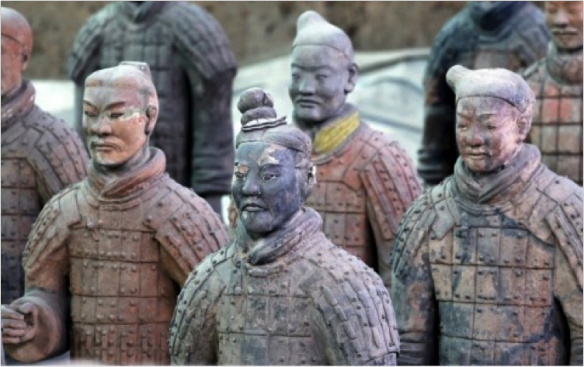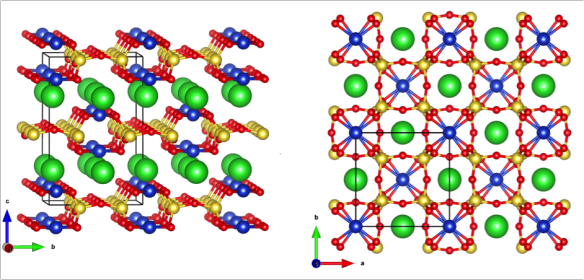Han purple – colour of the terracotta warriors
In 1974, local farmers digging a well in China's Shaanxi province uncovered the tomb of the first Qin Emperor, who died in the 3rd century BC. Buried with the emperor were thousands of life-size terracotta figures, now famously known as the Terracotta Army. The warriors were once brightly painted, and although they have faded over the last 2000 years, the colours can still be seen. One of the prominent pigments used is known as Han purple, which is chemically a barium copper silicate, BaCuSi2O6.

Terracotta warriors, coloured with now-faded Han purple pigment. Source: q-files.com
Han purple was the first synthetic purple pigment, and was used from at least the 8th century BC until the end of the Han dynasty in the 3rd century AD, when the secrets of its production were lost. It appears to have been made from a mixture of barium and copper minerals, quartz, and a lead salt as a special extra ingredient that acts as a catalyst and flux. The mixture needed to be heated to between 900 and 1000 °C – any hotter and you'll get Han blue (BaCuSi4O10), which is closely related to Egyptian blue (CaCuSi4O10), the oldest synthetic pigment.

The structure of Han purple, BaCuSi2O6, viewed along two different directions, with barium atoms in green, copper in blue, silicon in yellow, and oxygen in red. It can be found in entry 9001237 of the Crystallography Open Database.
Modern interest in Han purple goes beyond its colour. Crystallography has revealed that it has a layered structure with layers of barium atoms sandwiched between copper silicate layers. In 2006 it was discovered that at temperatures very close to absolute zero, and in the presence of a strong magnetic field, the material effectively loses a dimension, transforming from a 3D material to a 2D Bose-Einstein condensate as it crosses a quantum critical point.






